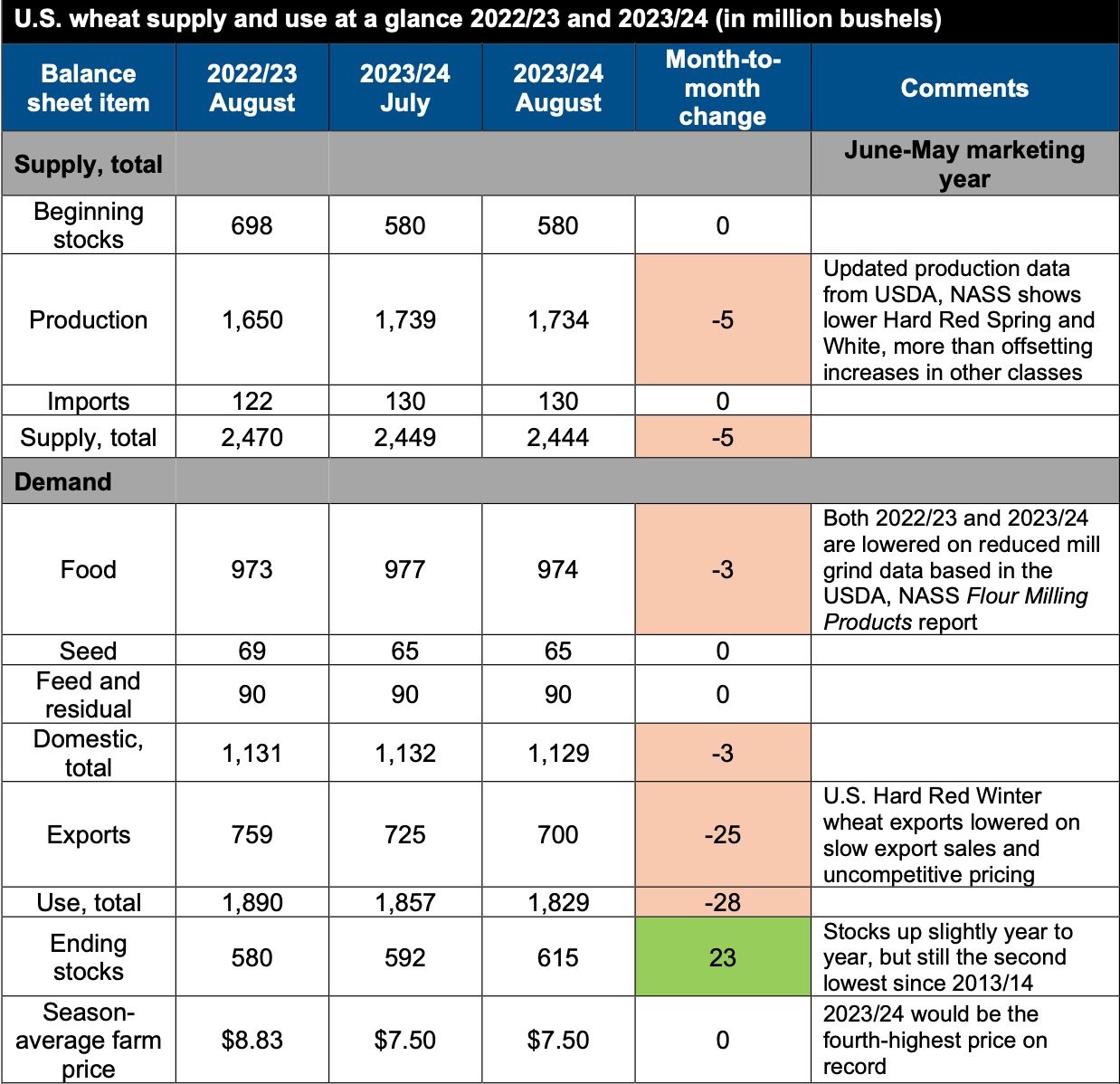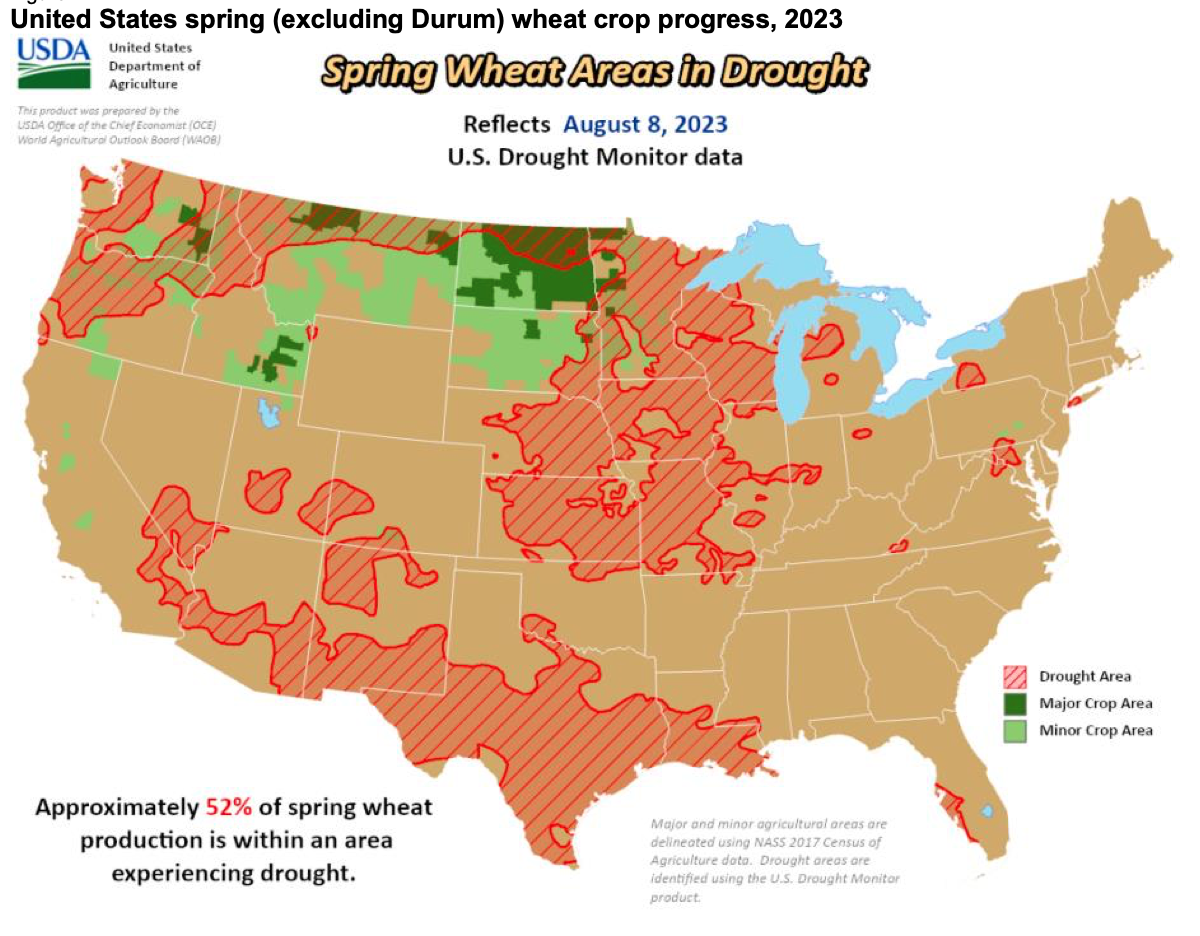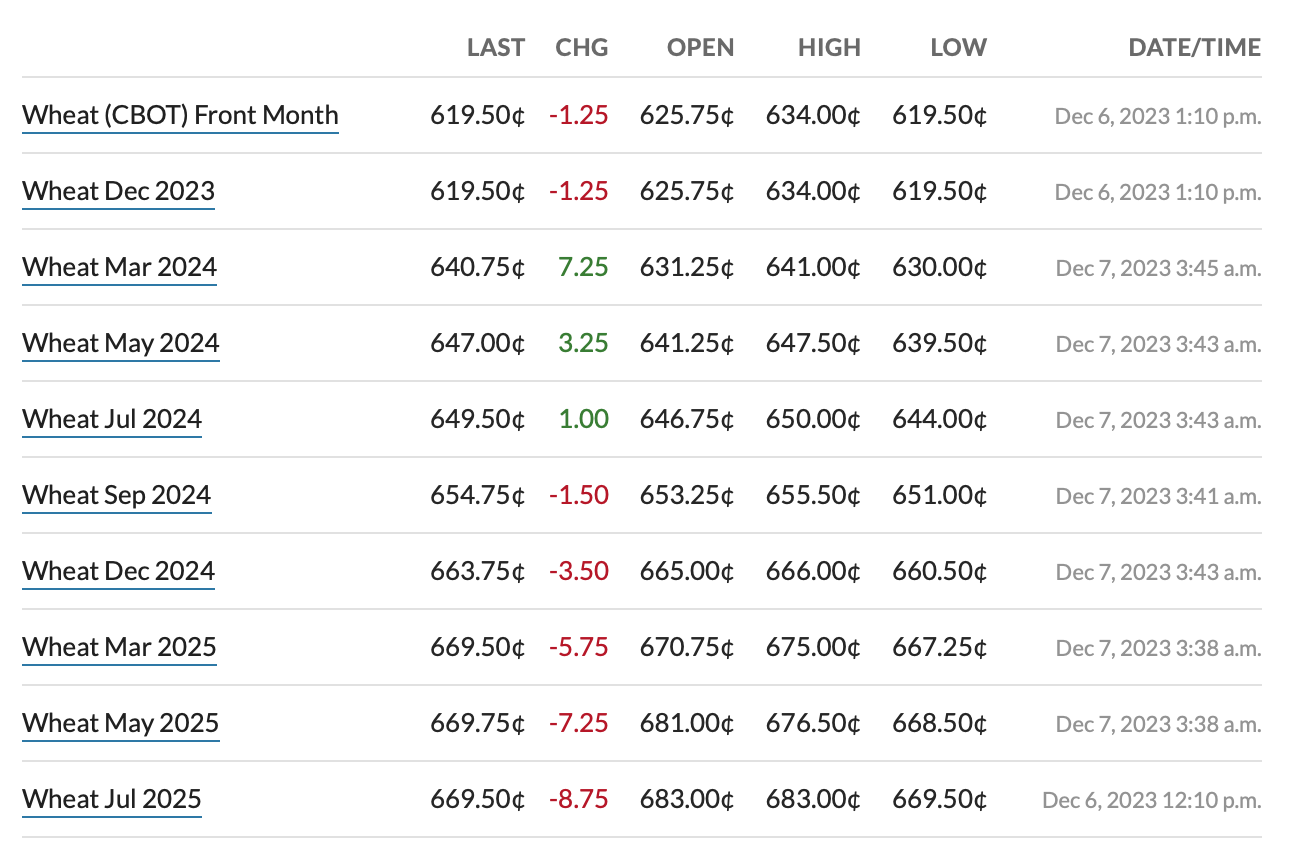Global Wheat Price Prediction: Impacts of Economics and Climate

During 2022 and 2023, agricultural markets experienced a great volatility due to the Covid pandemic and geopolitical tensions which still prevail. So, what to expect from 2024 and years to come? This article provides an overview of the US and other countries’ wheat markets. You will find out what influences wheat price predictions, which countries are the biggest importers and exporters of wheat, and which price rates are expected in the next year.
Table of Contents
A Detailed Glance at the US Market
How Weather Will Impact Wheat Crops
War and Wheat Prices
Wheat Market Forecast 2024
China – The larger consumer on the global wheat market
Russia – The future winner on the global wheat market
Australia gains traction in exports of wheat
Indonesia is becoming the biggest importer
Conclusion
FAQ
A Detailed Glance at the US Market
We will start with a detailed overview of the American domestic market, where wheat remains one of the most widely consumed commodities.
The US wheat output for the 2023–2024 marketing year is expected to be 1,734 million bushels, according to the USDA (National Agricultural Statistics Service’s crop output report). This is 5% higher than the previous year's prediction. However, there is is a decrease of 5 million from the July estimate:

There is a 0.3 bushel reduction in the average all-wheat yield per acre, down to 45.8 bushels. The report included revised area planted and harvested based on certified acreage data from the USDA and Farm Service Agency (FSA), in addition to updated production numbers.
The average predicted yield of winter wheat is 48.1 bushels per acre, which is an increase of 1.2 bushels from the July prediction, and up from 47.0 bushels the previous year. The amount of winter wheat sown has been reduced to 36.8 million acres, and the amount harvested has also been reduced to 25.5 million acres.
Now, let’s view projections and predictions for different sorts of wheat according to the USDA and NASS:
- Hard Red Winter (HRW) output in the next marketing year to be 585 million bushels, an increase of 8 million above the July forecast. Although output of HRW has increased by 10% from the previous year, this season has seen greater abandonment rates and poorer yields than usual.
- Soft Red Winter (SRW) output for 2023–2024 is projected to reach 440 million bushels, up 18 million from the projection in July and 31% over the previous year due to increased yield and harvested area.
- White wheat output is expected to reach 239 million bushels, which is 6 million fewer than previously. The majority of this category, soft white winter wheat, is cultivated mostly in the Pacific Northwest and is projected to be lower this year than previous years due to somewhat drier growing conditions.
- Hard White Winter, Hard White Spring, and Soft White Spring, however, are all estimated to increase marginally from year to year.
Due to the poor rate of export sales, all-wheat exports from the United States are expected to total 700 million bushels in 2023–2024—a 25 million decrease from the July prediction. Exports of HRW are now only 165 million bushels, down 25 million bushels.
The amount of wheat imported into the US in 2023–2024 remains at 130 million bushels. Ten million bushels of wheat were officially imported into the United States in June 2023. The season-average farm price for 2023–2024 remains at $7.50 per bushel.
How Weather Will Impact Wheat Crops
In 2023, there is a short-term tendency of an El Nino worldwide weather pattern: high air pressure occurs in the western Pacific area, and low air pressure occurs in the eastern Pacific as a result of a belt of warm water developing in the central Pacific Ocean. This causes hotter and drier weather in certain important places for wheat growers and consumers. It will also impact Australia, one of the world's top three producers of wheat.
More ideal growth circumstances elsewhere in the world can occasionally counteract the short-term effects of the harsher conditions in these locations. However, it's also important to recognize that this weather pattern is occurring against the larger background of climate change, which makes farming more difficult worldwide.
A June study published in the scholarly journal Climate and Atmospheric Science examined the possibility that extreme "doomsday" weather would disrupt winter wheat crops in northeastern China and the US Midwest in the same year, causing an even more severe global supply shock than those we've recently witnessed.

War and Wheat Prices
The uncertainty also relates to the recent upheaval in Ukraine, which, before Russia's invasion of the country at the end of February 2022, was the world's fifth-largest wheat exporter (10% of the global wheat market). The fact that Russia is a significant exporter of wheat itself complicates matters further, since, despite the fact that its own agricultural regions have not been devastated by conflict, the Kremlin is nevertheless facing the consequences of international economic sanctions.
The ensuing supply shock and output uncertainties have drastically affected wheat prices around the world. Following the Russian invasion in March 2022, wheat prices worldwide spiked by almost 20%.
The future of the world's food supply seems even more pessimistic. As of July 28, Chicago SRW Wheat Futures (ZWWOO) had increased by more than 9% after the deal's breakdown. The price of wheat has increased by more than 31% in the last year.
The difficulties brought on by the aforementioned meteorological issues have been exacerbated by the region's continuous conflict and the uncertainties surrounding earlier initiatives like the Black Sea grain program.
Due to their ability to bridge the supply gap with Africa and the Middle East, Russian wheat shipments will significantly impact wheat prices, given the fact that the United States produces just around 7% of the world's wheat.
Russia is still making use of its position, but things can change. The war might have a significant effect on global supply and pricing if exports are halted or there is a shortage of domestic crops. Given the multitude of factors that might influence the wheat market and the high cost of inputs, farmers have to search for cost-cutting and price-enhancing options.
Wheat Market Forecast 2024:
According to Rabobank's annual Agri Commodity Markets Outlook study, after three years of volatility brought on by weather, conflict, and rising energy and input costs, global food commodity prices are anticipated to decline from record highs in 2024.
One of the primary factors driving the rise in food prices is expected to decline with decreased prices for agricultural commodities. Rabobank continues to forecast sluggish demand despite price and availability alleviation, as consumers continue to face financial obstacles, including high interest rates and inflation. According to Rabobank, the market for agricultural commodities will rise more slowly in 2024 due to slow economic development.
According to MarketWatch, the wheat price forecast in 2024–2025 will be as follows:

Since 2020, commodity prices have risen significantly due to the resolution of the Sino-US trade dispute and China's reemergence as the primary buyer of agricultural exports. Prices increased in response to Russia's invasion of Ukraine in February 2022. Since then, they have shifted downward. The USDA predicts season-average prices for wheat cultivated in 2024 to be $6.30 in its 10-year baseline.
However, reduced commodity prices may put pressure on the agricultural industry. In September, the Food and Agricultural Policy Research Institute projected that US net farm income, a measure of profitability, would drop by 2% from this year to $140.4 billion in 2024.
The USDA also predicted that farmers will plant 48 million acres of wheat, yielding 1.94 billion bushels of harvest.
As for Russian farmers, the cost of wheat production is expected to increase by at least 30% in 2024, largely due to higher fuel prices and due to the resurgence of a Russian wheat price slump on the international market. So far, Russian wheat is being sold for $228 per ton, whereas French wheat is more expensive at $251 per ton.
China – The larger consumer on the global wheat market
Due to China’s vast population, there is a high demand for wheat-based goods – it’s an essential part of their diet. The high consumption of wheat is further explained by the cultural and culinary significance of wheat-based Chinese cuisine items, including noodles, dumplings, and steamed buns. The demand for easy and processed wheat-containing foods has surged due to rapid urbanization and changing lifestyles, which is in line with evolving dietary habits.
The rising middle class and economy in China, together with their increased spending power, have also contributed to the popularity of wheat-based foods. Furthermore, the consumption of wheat cultivated domestically has increased as a result of government programs and subsidies promoting local crop production and guaranteeing food security. Furthermore, wheat is a crucial commodity in Chinese culture and history, being widely used for dishes that people eat during festivals and celebrations.
China was the world's largest importer of wheat in the 2022–2023 marketing year, according to the USDA, with 13.28 million tons being unloaded at the nation's several river and coastal ports. Australia ships 7.66Mt, or 57.7% of the total, of which there was 9.57Mt a year earlier.
Russia – The future winner on the global wheat market
Russia’s projected wheat output for the 2022–2023 marketing year is 91.0 million metric tons, up 21% from the previous year but unchanged from December 2022, according to a study released by the US Department of Agriculture in January 2023. Many causes, including excellent agricultural conditions, government backing, technical developments, and growing exports to vital regions, together with an emphasis on enhancing wheat quality, competitive pricing tactics, and diversification of export markets, may be contributing to this surge.
Despite Russia's assertions that the economic sanctions imposed by the West are impeding its agricultural exports, the country now exports over 24% of its wheat worldwide, up from 16% in the 2021–2022 marketing year prior to the invasion.
The market price is currently around 60% less than what it was in March 2022, immediately following Russia's invasion of Ukraine, when it was $13. Falling wheat shipments from Ukraine and Australia's predicted bad harvest are being replaced by Russian wheat.
As of October 9, the USDA reports that the price of wheat exported from Russia was $232 per ton, 20% less than the price of $305 in the United States. Russia anticipates a record-breaking crop in 2023 after reaching a record high in 2022. The nation wants to export as much as it can.
Australia gains traction in exports of wheat
Australia accounted for a record 13.7% of world wheat exports in 2022–2023, up 1% from the previous year, and 8.5% from the drought-affected 10-year low of 5.2% in 2019–20, according to the USDA. Australia's wheat exports have increased due to favorable weather, the country's recovery from their recent drought, cutting-edge agricultural methods, increased demand worldwide, competitive pricing, trade ties, favorable currency exchange rates, and government backing.
Australia has been the primary supplier of wheat to China, Vietnam, Indonesia, and the Philippines in recent years. Nevertheless, Australia has also been up against fierce rivalry from other nations that export wheat, like the USA, Canada, Russia, and Ukraine. However, as Australia is one of the few wheat-exporting nations unaffected by the 2021 drought, it may anticipate higher wheat exports over the next year or years. In 2021, wheat yields in Canada fell by almost 39%, while Gro Intelligence forecasts an 8% decline in US winter wheat yields year over year.
As of now, China is Australia's biggest market for wheat, with 0.68 million tonnes and 1.6 million tonnes shipped from October to December 2021, respectively. Indonesia comes in second.
Indonesia is becoming the biggest importer
According to the USDA, Indonesia imported around 11.229 million metric tons (MMT) of wheat in 2021–2022. Due to its vast population, low local output, shifting dietary habits, trade relationships, government regulations, and cultural significance, Indonesia holds the top spot in the world market for wheat imports. Indonesia, which has a sizable population and is ranked fourth in the world, has a high demand for wheat-based foods.
The nation is mostly dependent on imports because of its bad climate and topography. The trend toward wheat foods is another factor contributing to its large imports. Consistent supply is guaranteed by government regulations and support networks, and Indonesia's standing is strengthened by trade agreements with significant exporting nations.
Conclusion
As one of the most demanded commodities around the world, and yet depending on yields, wheat is a pretty volatile asset. While exports and imports were at their highest during pre-Covid times, 2021–2023 was a pretty hard period for many countries. Geopolitical instability and dry weather conditions impacted its production and transportation. In the coming years, we can expect the price of wheat to reach a maximum of 670 dollars per bushel, which is conditioned by growing demand. Wheat stocks and wheat futures will grow correspondingly.
FAQ
What is the wheat outlook for 2024?
Wheat will continue being one of the major food commodities around the world. Russia and Australia are still the biggest exporters, but face certain challenges: the former is trying to sell off their excessive yields at a discount and has to deal with higher production costs, while the latter suffers from drought and adverse weather conditions.
What are the predictions of wheat prices?
Wheat prices are more likely to keep growing together with demand, especially in such countries as Indonesia and China (and other major importerts). Russian wheat may be discounted even further because the country is striving to sell its excessive yields. Australian and American wheat may be priced at pretty much the same levels.
What is the future projection for wheat?
Wheat is more likely to retain its price levels of 2021–2022, since demand is not going to lower. With China and Indonesia being among the biggest importers, Australian wheat may become a bit more expensive. With El Nino weather conditions affecting yields, the US and Australia may harvest less crops than expected.


